When is a B-29 Not a B-29?
The Boeing B-50 was essentially a postwar update to the B-29 Superfortress. Similar enough to the B-29 that Boeing never did give it a separate name, the B-50 used the more powerful Pratt & Whitney R-4360 radial engine. Other differences between the B-29 and B-50 included redesigned engine nacelles and engine mounts, an enlarged and taller folding vertical tail and rudder, reinforced wing structure, improved remote turret fire-control equipment, strengthened landing gear, increased takeoff weight and fuel capacity, nose wheel steering, and improved flight control systems including larger flaps.
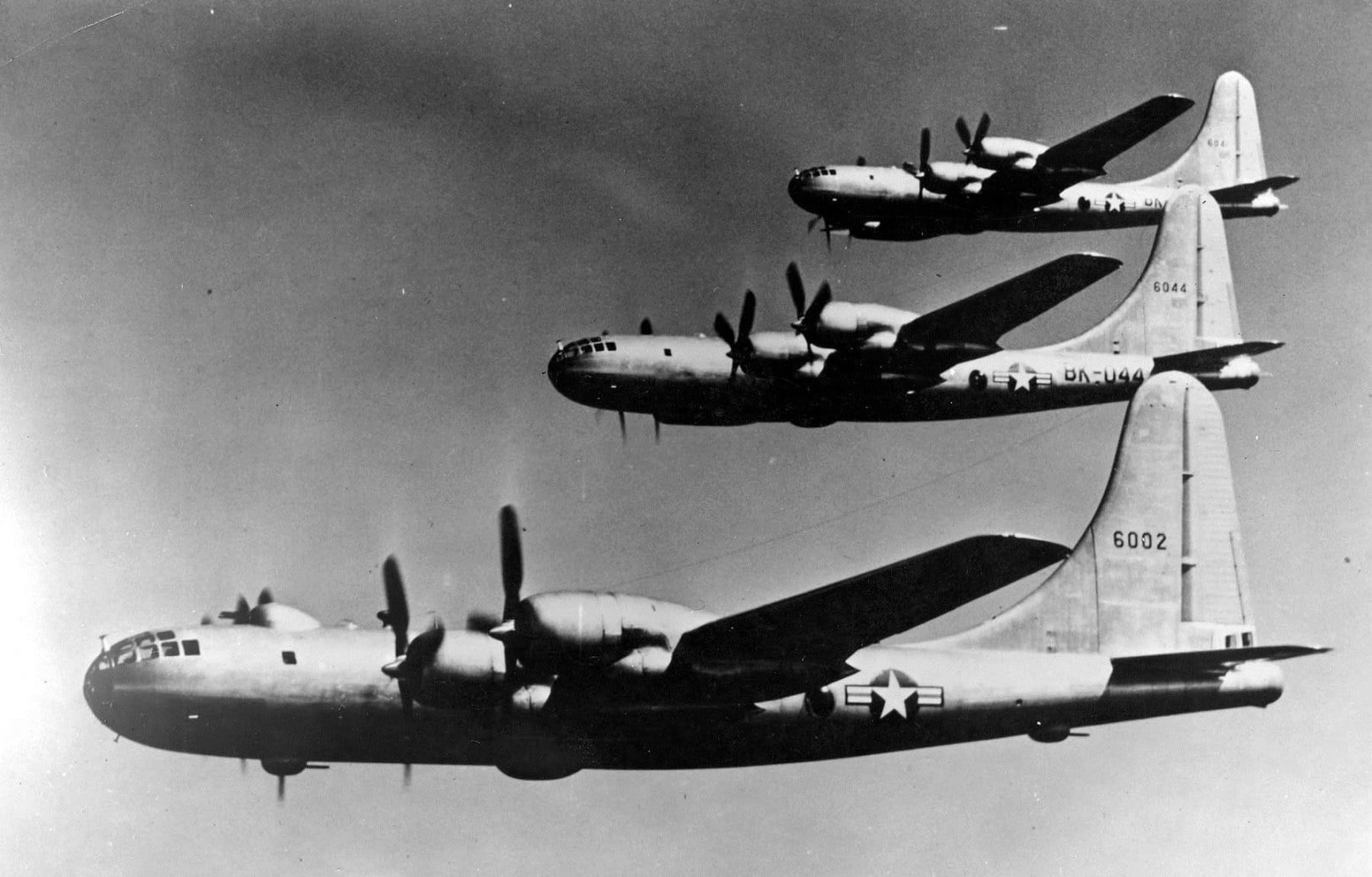
A Faster Bomber for SAC
The improvements to the basic B-29 airframe yielded an additional 50 to 60 miles per hour in airspeed. The most obvious visible differences between the B-29 and the B-50 were the considerably taller vertical stabilizer of the B-50 and the distinctive engine nacelles required for the R-4360 engines.
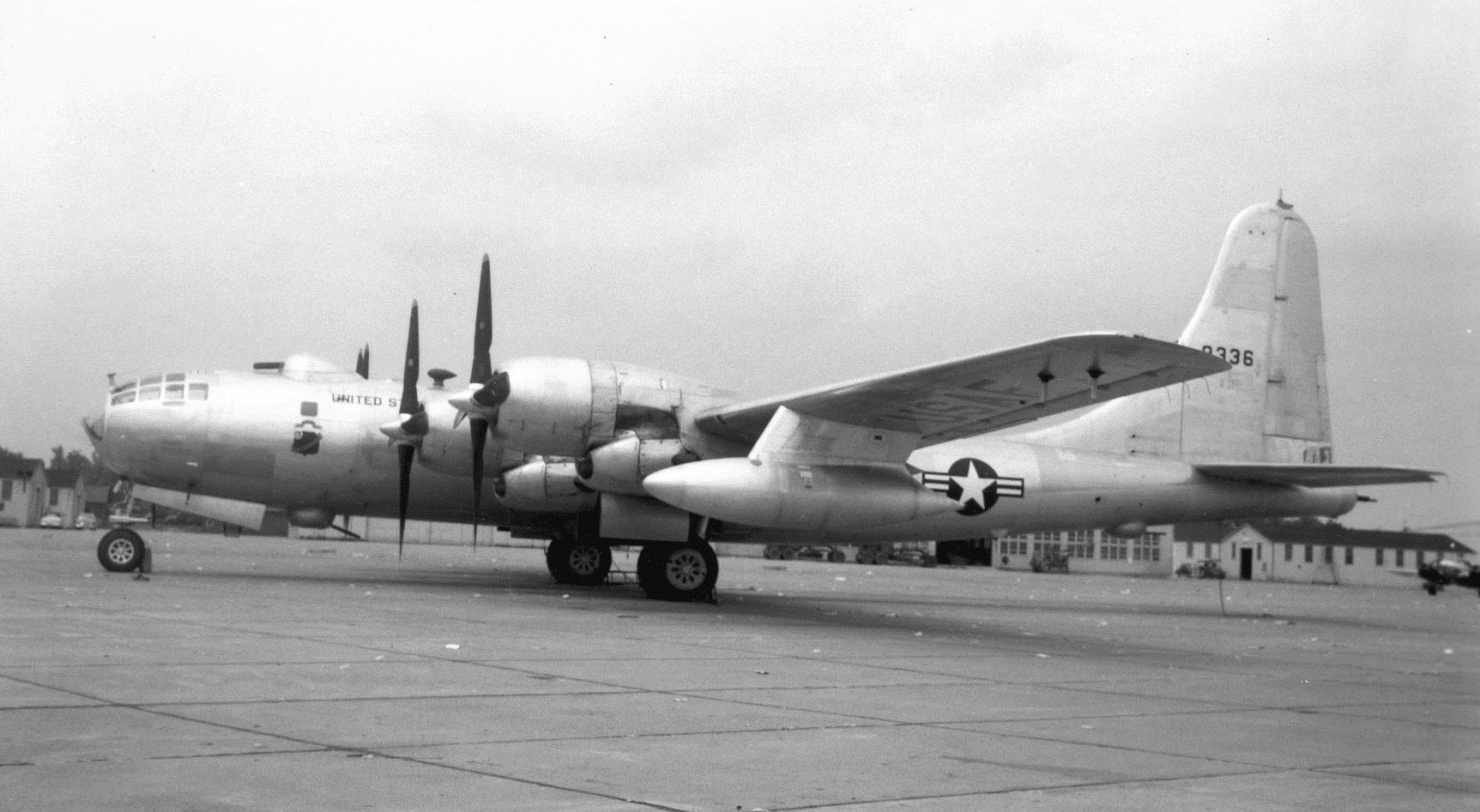
Quickly Replaced…as a Bomber
Deliveries of the B-50A began in 1948 and Strategic Air Command utilized the aircraft as frontline bombers for only a short time. With the all jet-powered Boeing B-47 Stratojet coming off assembly lines so soon after the B-50 became operational, the Stratojet took over the bombing mission for SAC during the early 1950s. By 1955 the last of the SAC B-50 bombers had been retired. But that was not the end of useful service for the B-50.
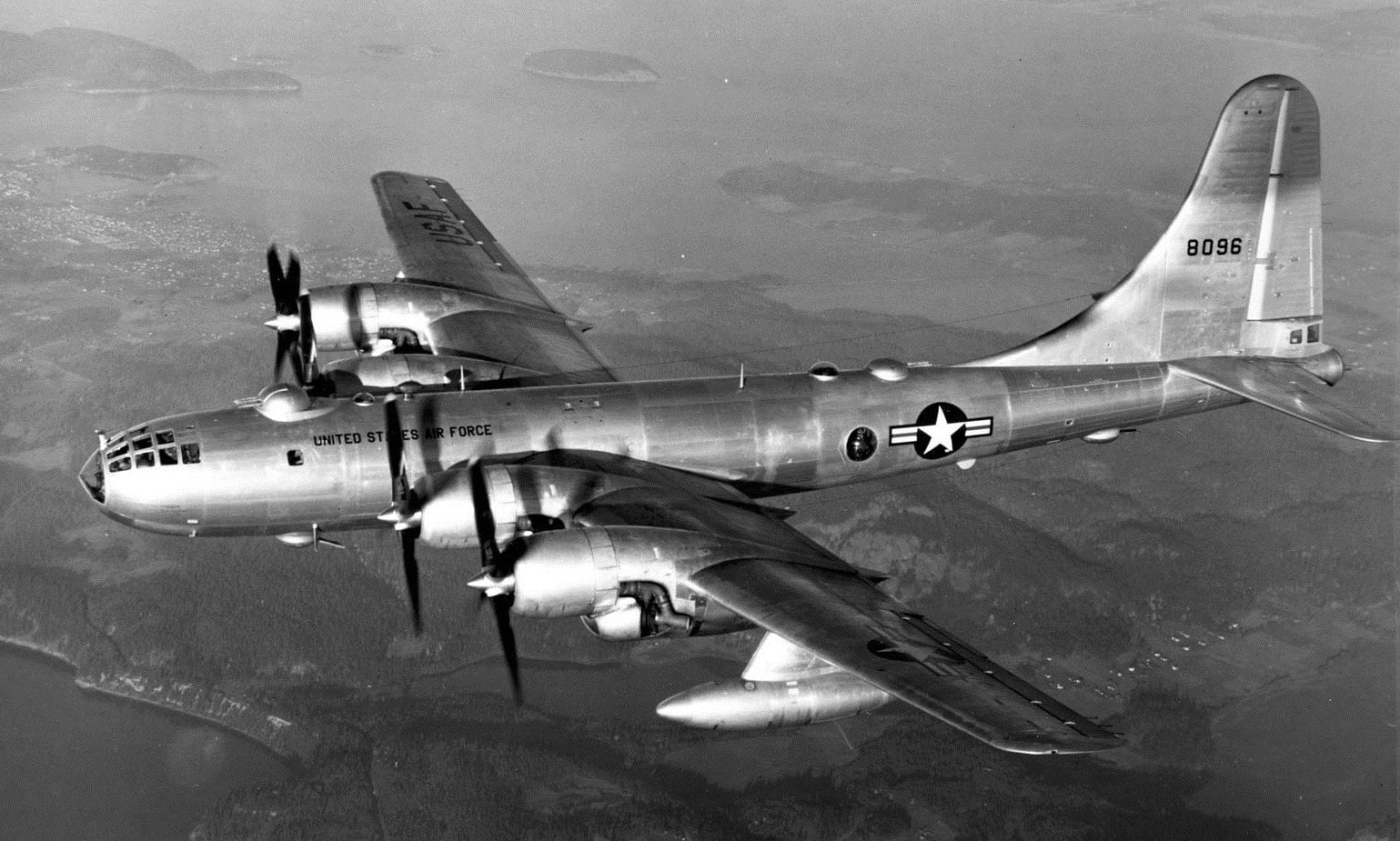
From SAC to TAC as Tankers
Once retired from the SAC bombing mission, the basic B-50 bombers were modified to fulfill aerial tanker (KB-50) and weather reconnaissance (WB-50) missions. Tactical Air Command (TAC) adopted the KB-50 because its more powerful engines made it a more than suitable replacement for their worn-out KB-29 tanker aircraft. In order to fulfill the tanker role, TAC KB-50s were modified with extensively reinforced outer wing panels, refueling equipment capable of simultaneously refueling up to three aircraft by the Air Force’s preferred probe-and-drogue method, the removal of all defensive armament, and ultimately in the KB-50J variant, a pair of pod-mounted General Electric J-47 jet engines.
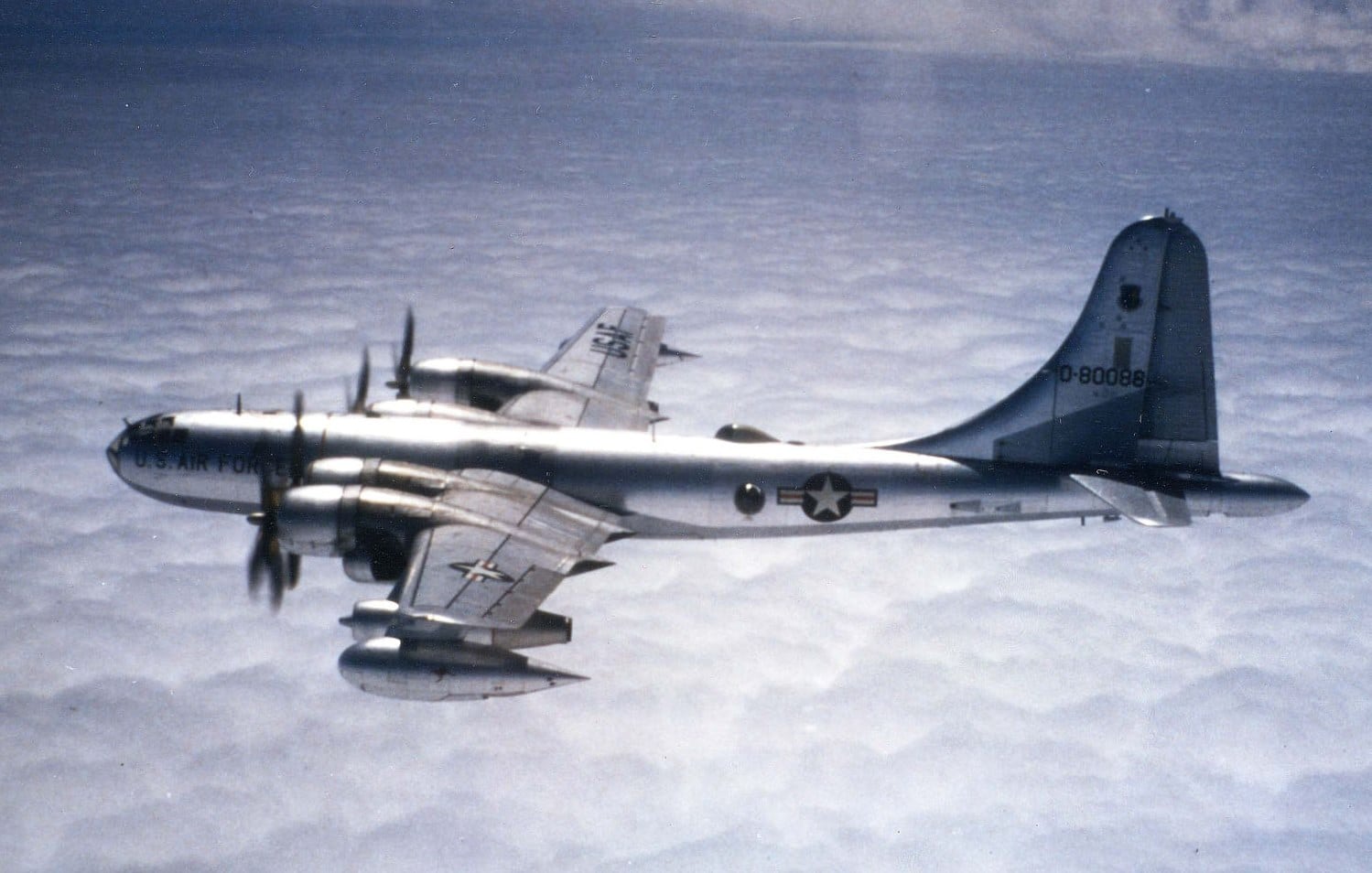
An Early Vietnam War Participant
By the end of 1957 Tactical Air Command refueling squadrons were all equipped with KB-50s. KB-50Js were utilized by TAC and by United States Air Force Europe (USAFE) and Pacific Air Forces (PACAF). KB-50Js also deployed to bases in Thailand, flying refueling missions over Indochina during the first few years of the Vietnam War.
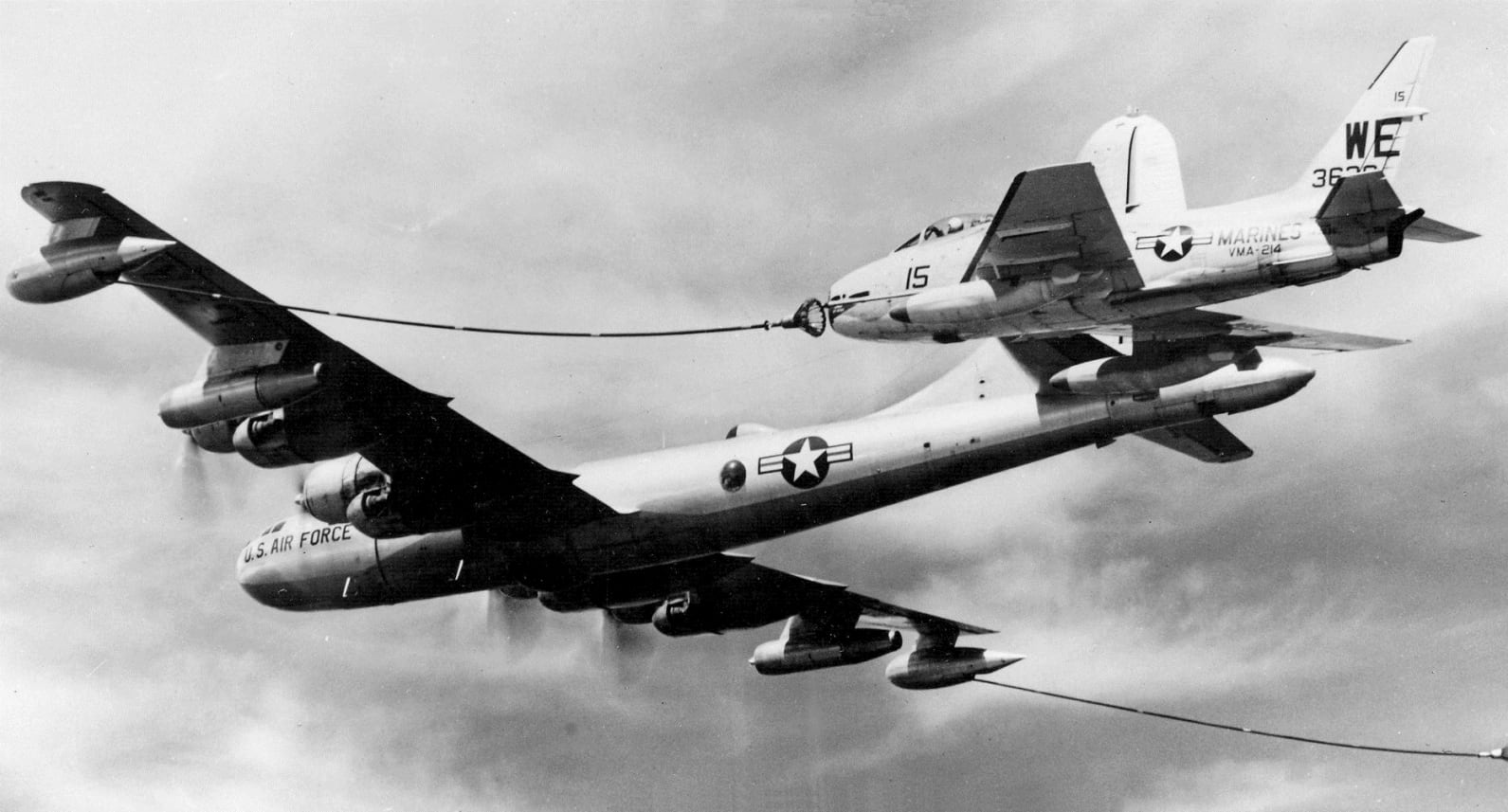
Weather and Reconnaissance
The Air Force’s Air Weather Service required a replacement for its ageing WB-29 aircraft. The WB-50 could fly faster, higher, and farther than the WB-29. Stripped of their armament and equipped for hurricane hunting and other long-range weather reconnaissance missions, 36 WB-50s went into weather recon service beginning in 1956. Although replaced by retired SAC B-47s in 1962, the WB-50 nonetheless played a role during the Cuban Missile Crisis, monitoring weather around Cuba and in the Caribbean in order to plan photo-reconnaissance flights.
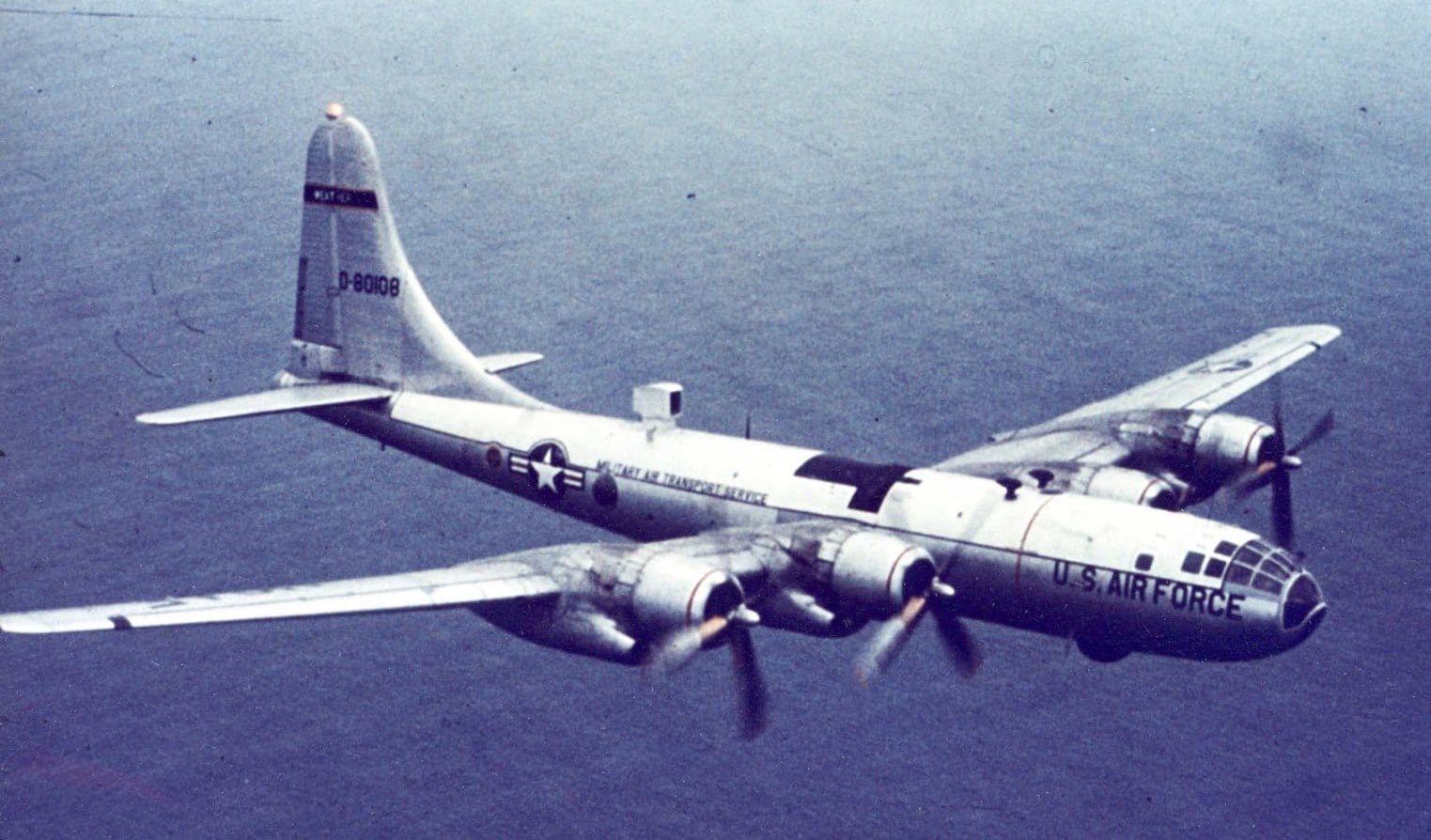
The Last of Boeing’s Propeller-Driven Bombers
The remaining operational KB-50 and WB-50 aircraft were retired in 1965 due to metal fatigue and corrosion found in their airframes. But even after retirement the B-50 found a way to contribute. With a redesigned upper fuselage but few other differences, the basic B-50 design formed the basis for the Boeing 377 Stratocruiser airliners and the C-97 Stratofreighter transport and KC-97 Stratotanker aerial tanker. The B-50 was the last piston-engine bomber designed by Boeing for the United States Air Force and remained is service for close to 20 years.
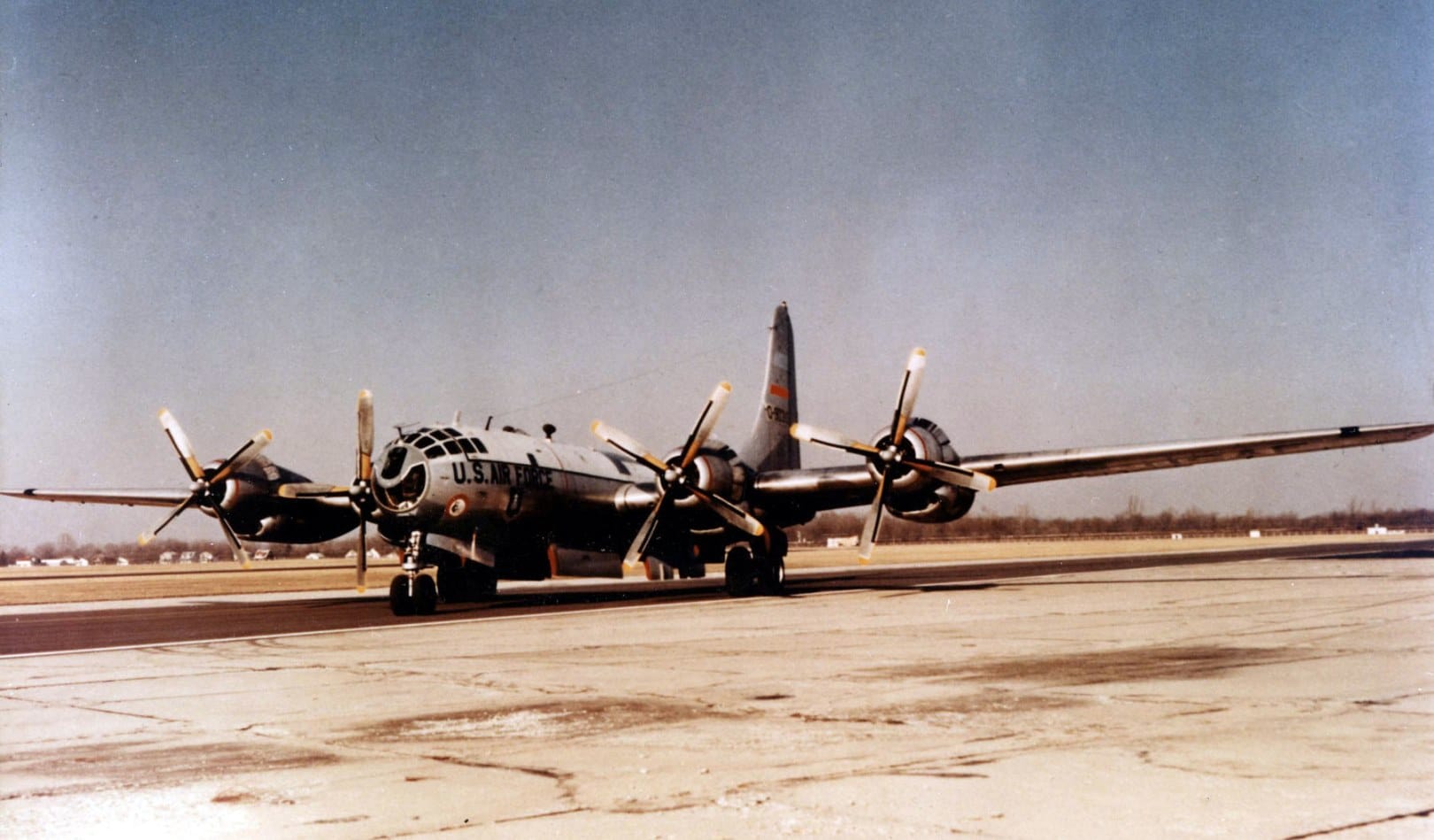
Carrying On a Tradition
The next Lucky Lady was the Lucky Lady III, one of three Boeing B-52B Stratofortresses that circumnavigated the earth non-stop in January of 1957. Commanded by now-Lieutenant Colonel James H Morris (co-pilot of the B-50A Lucky Lady II), Lucky Lady III was flying from Castle Air Force Base in California as part of Operation Power Flite. The B-52s completed the mission in just 45 hours and 19 minutes, averaging a ground speed of 536 miles per hour. The B-52s were refueled in-flight by Boeing KC-97 Stratotankers, themselves developed from the B-50. Only eight years after Lady II, Lady III circumnavigated the planet non-stop in less than half the time it took Lucky Lady II to do it.
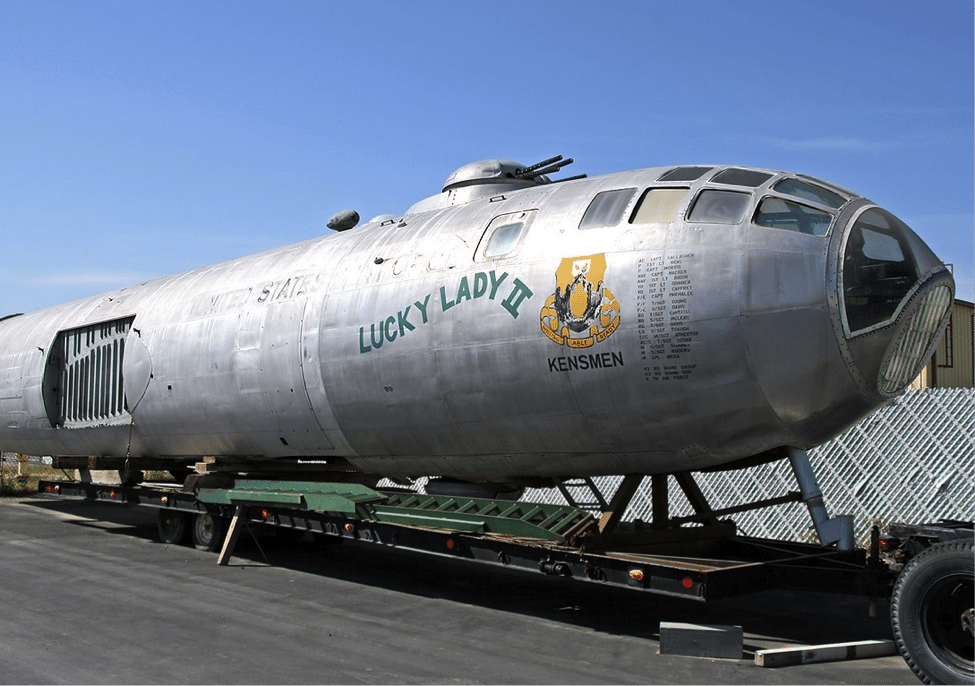
The fuselage of the B-50A Lucky Lady II is now displayed at the Planes of Fame Air Museum in Chino California.
[youtube id=”x9MIba677i0″ width=”800″ height=”454″ position=”left”]

I was honored to be on matianance crew for wb29
wb50, and kb50 from 1956 until 1959. At yokota ab, japan and langley afb, va.
My dad was one of the Navigators on the KC97’s fueling the B52’s in ‘57. Great story, appreciate the article!
[…] Lucky Lady II: The B-50 That Flew The First Non-Stop Around … Lucky Lady II: The B-50 That Flew The First Non-Stop Around-The-World Flight. February 26, 2017 · 2 … Feb 26, 2017 – Uploaded by okrajoe […]
I was a crew chief on WB-50 AT Kindley AFB,Bermuda 1961-1963 tail number 337 launched it on last mission.